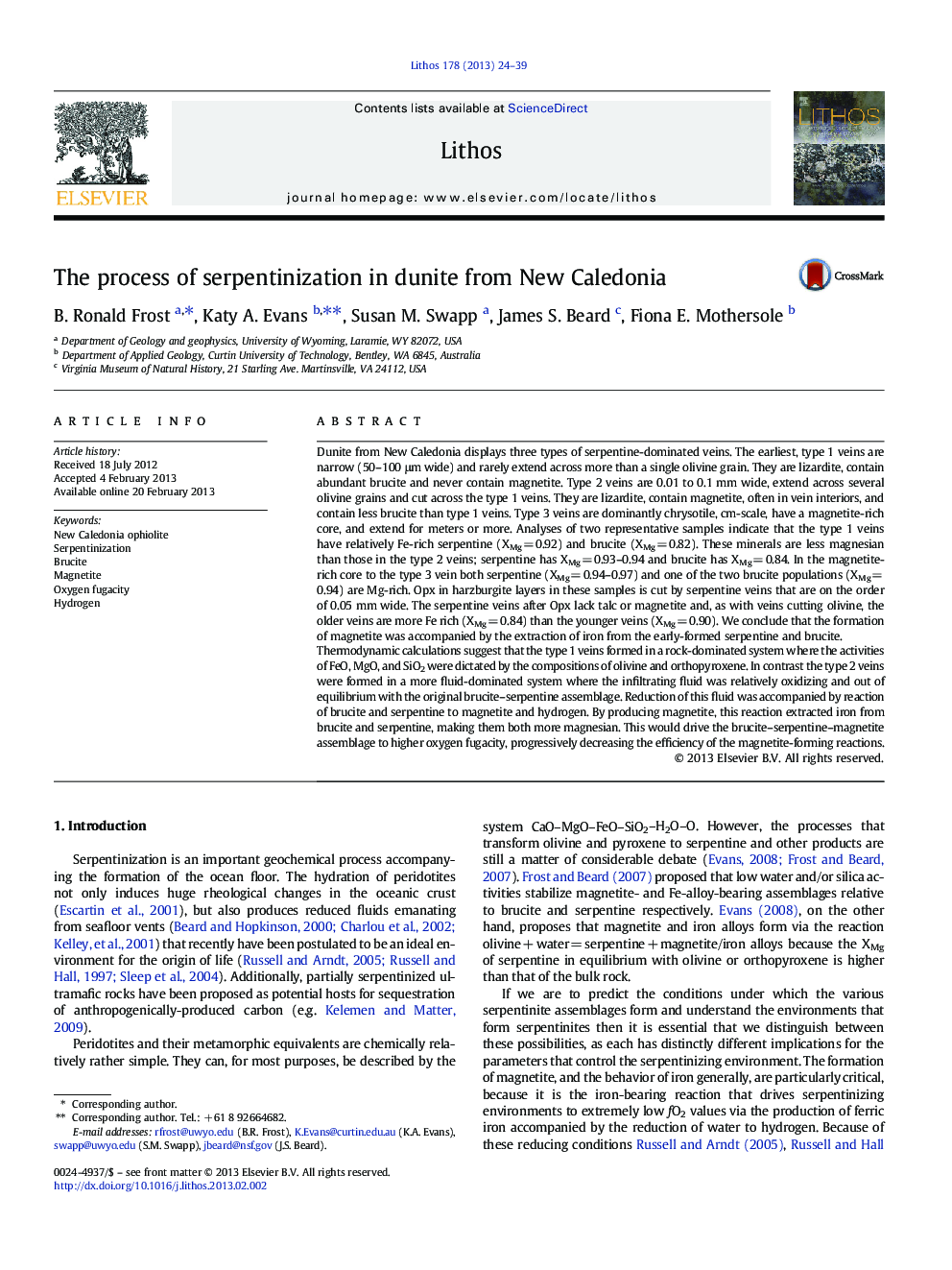| کد مقاله | کد نشریه | سال انتشار | مقاله انگلیسی | نسخه تمام متن |
|---|---|---|---|---|
| 4716249 | 1638687 | 2013 | 16 صفحه PDF | دانلود رایگان |
Dunite from New Caledonia displays three types of serpentine-dominated veins. The earliest, type 1 veins are narrow (50–100 μm wide) and rarely extend across more than a single olivine grain. They are lizardite, contain abundant brucite and never contain magnetite. Type 2 veins are 0.01 to 0.1 mm wide, extend across several olivine grains and cut across the type 1 veins. They are lizardite, contain magnetite, often in vein interiors, and contain less brucite than type 1 veins. Type 3 veins are dominantly chrysotile, cm-scale, have a magnetite-rich core, and extend for meters or more. Analyses of two representative samples indicate that the type 1 veins have relatively Fe-rich serpentine (XMg = 0.92) and brucite (XMg = 0.82). These minerals are less magnesian than those in the type 2 veins; serpentine has XMg = 0.93–0.94 and brucite has XMg = 0.84. In the magnetite-rich core to the type 3 vein both serpentine (XMg = 0.94–0.97) and one of the two brucite populations (XMg = 0.94) are Mg-rich. Opx in harzburgite layers in these samples is cut by serpentine veins that are on the order of 0.05 mm wide. The serpentine veins after Opx lack talc or magnetite and, as with veins cutting olivine, the older veins are more Fe rich (XMg = 0.84) than the younger veins (XMg = 0.90). We conclude that the formation of magnetite was accompanied by the extraction of iron from the early-formed serpentine and brucite.Thermodynamic calculations suggest that the type 1 veins formed in a rock-dominated system where the activities of FeO, MgO, and SiO2 were dictated by the compositions of olivine and orthopyroxene. In contrast the type 2 veins were formed in a more fluid-dominated system where the infiltrating fluid was relatively oxidizing and out of equilibrium with the original brucite–serpentine assemblage. Reduction of this fluid was accompanied by reaction of brucite and serpentine to magnetite and hydrogen. By producing magnetite, this reaction extracted iron from brucite and serpentine, making them both more magnesian. This would drive the brucite–serpentine–magnetite assemblage to higher oxygen fugacity, progressively decreasing the efficiency of the magnetite-forming reactions.
► Five types of serpentine veins are found in dunite from New Caledonia.
► Early veins, with Fe-rich brucite and serpentine cut single grains of olivine.
► Later through-going veins contain magnetite and Mg-rich brucite and serpentine.
► Early veins were rock-dominated, later veins were fluid-dominated.
► Reduction of fluid was accompanied by production of magnetite and hydrogen.
Journal: Lithos - Volume 178, 15 September 2013, Pages 24–39
